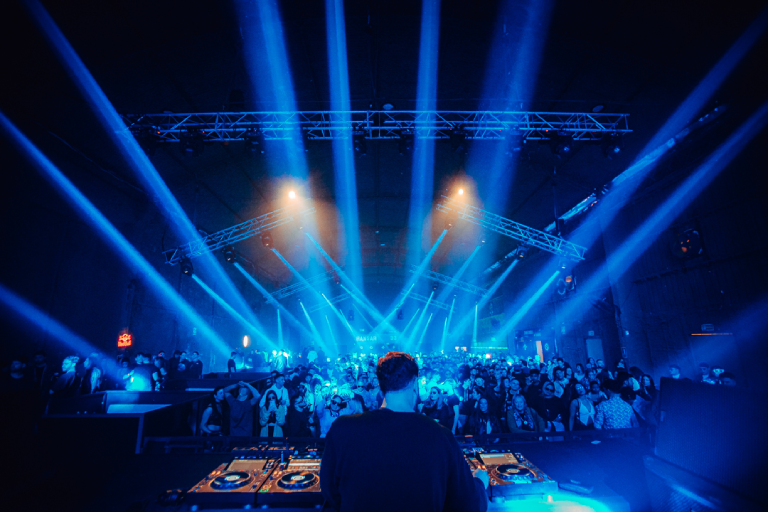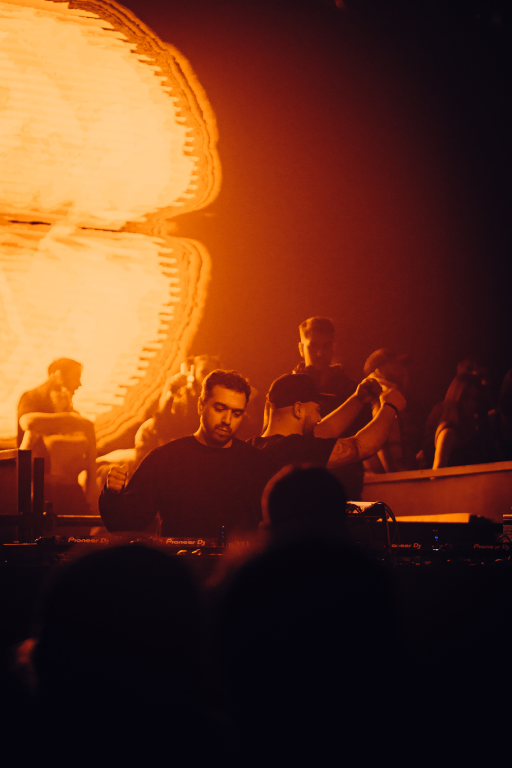LIVE
ENZO MONZA
Hello Enzo, it’s a pleasure to greet you. For those who don’t know you, how would you describe yourself?
Hello, nice to meet you, thank you very much for the invitation. I would describe myself as a music enthusiast who loves to create new music, explore different sounds, and a person in constant search of improvement and innovation in music.
Music is my way of connecting with others, and in each of my productions, I strive to convey different emotions and feelings for everyone to enjoy in their own way.
Besides producing, I love sharing my music live and seeing how people respond to it. It is something special for me to select and mix my tracks and those of other artists that align with the energy of the moment.
I also love collaborating with other artists and learning from them, as well as sharing what I have learned. I think that by exchanging ideas and techniques, I can improve my own creative process and also contribute something valuable to the work or lives of others.

We know you have a project with Gabriel Gil and Martín Costas, where we had the pleasure of seeing Marco Faraone, Eli Brown, and soon Layton Giordani along with Nicolás Taboada. Why call it Área T?
Many have asked us about the name Area T. The idea comes from how the stages are named at the Awakenings festival, one of the most renowned techno festivals in the world. In this festival, each stage is called “Area” and assigned a letter. We took “Area” and added the “T” for Techno.
We also wanted the name to somehow connect with the visual element of our brand, the cube, which emerged before the name itself. With this, we aim to create a visual experience for our audience. The name has a double intention: on one hand, it refers to the surface area of this three-dimensional geometric shape, where each perspective of the cube represents different ways to enjoy the party. On the other hand, Area T also plays with the notion of a conceptual space where the cube is the central element of our visual aesthetic. Besides being visually impactful, the cube itself is not a static element; it is dynamic, which we also use to show our vision for the future. This is why we decided that it should be a shape in constant evolution, accompanying the changes that occur in the music industry. The cube will take different forms throughout Area T’s journey, reflecting musical changes, technological and visual advances that will emerge in art and design.
What is the process you develop with your colleagues for each event? What do you want to project to the audience?
For each event, we start by looking for cutting-edge artists who align with the music we want to showcase at Area T. In addition, we are always looking for ways to improve and offer the best show to our audience. From day one, Area T started having a community of people who attend each event and it continues to grow, which indicates that we are on the right track. Therefore, our number one priority is the audience.
We are also constantly exchanging ideas to provide a different party. Besides that, at each event, one of us is present on stage, which is why we are making new music every day to show it at Area T.
The main reason why Area T was born was to have a place to showcase the musical work we do day after day. The three of us are music producers, and we believe it is essential to have a space to present the music we make.
We also want to offer the audience a different perspective of techno and melodic techno, strongly betting on the visual connection with the music.

What is usually the initial trigger for your musical projects? What is the best way you find to develop them?
Generally, the trigger for my productions is wanting to be better every day and achieve my goals. Also, after an event, the connection with the audience makes me return to the studio with a lot of inspiration to create new music. The audience’s interaction and their reactions provide me with tremendous feedback to know if the tracks are on the right path.
In the studio, I usually start with an idea that comes to me or a feeling I want to convey, and then experiment with different sounds, usually starting from a synthesizer or VST to shape it. Although I always try to include some of the sounds from my analog synthesizers to give the tracks a bit of warmth.
Another important source of inspiration is working with other artists. Collaborating with musicians makes you step out of your comfort zone to explore new paths in production.
For the development of my tracks, I don’t have something defined; it depends on the day I start from the beat or the melody. If I already have an idea in mind, it is generally a melody, and from there I begin, then develop the other parts of the track, always leaving room to improvise on the main idea, allowing the music to flow naturally. I am not one to make tracks in one or two days; most of my tracks are works of weeks or even months. I believe that there must be a balance when creating new music in terms of being very structured or letting everything come from improvisation. I always do the mixing of my tracks myself and sometimes the mastering as well.
How is your studio? Are you into hardware or VST synthesizers? What is your favorite DAW?
I produce with FL Studio and Ableton Live. As for synthesizers, I have some that I adore, like the Moog Subsequent 37, which produces incredible basses and leads, and the Roland Juno, which is my favorite because it has a sound that I love and is super versatile. I also use the Elektron Digitone and the Behringer MS-1, among others.
Additionally, I use various VSTs for effects, especially those from UAD, which sound great and emulate audio processing hardware very well. For VST synthesizers, I really like Diva and Serum; they are very versatile and have incredible audio quality.
My studio is like a typical home studio. I have two monitors, a PC, a sound card, and a MIDI controller to handle the VSTs better. I also have some external synthesizers, like the ones I mentioned before, which I think add a touch of warmth to the music and increase creativity. I think that when it comes to being creative, it is not the same to adjust virtual knobs on a screen as having the physical controls of real synthesizers in front of you. I feel that the physical interaction with the synthesizers allows me to connect better with the music.
What would you like to say to the people who follow you?
First of all, I want to thank them for always being there and for supporting my music; it means a lot to me. Every comment, message, and presence at the events where I play or produce motivates me a lot to continue on this path.
I hope my upcoming releases are to their liking as much as I enjoyed producing them. 🙌🏼
As I mentioned before, they are the best feedback to return to the studio with a lot of inspiration and eagerness to create new music, so thank you very much for that as well.
I also want to thank the entire Fusion team for this invitation and space to share my work. See you soon!